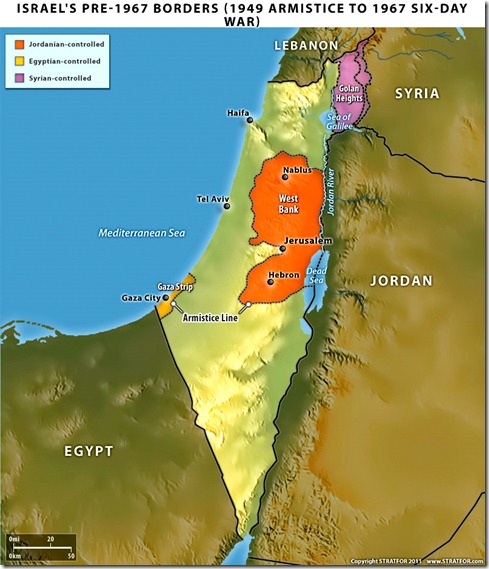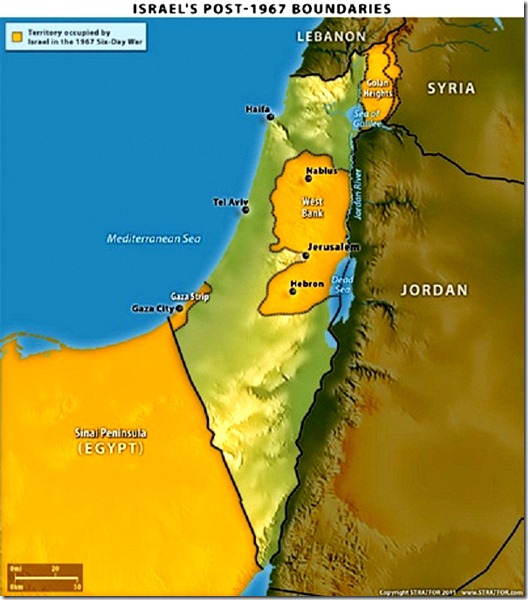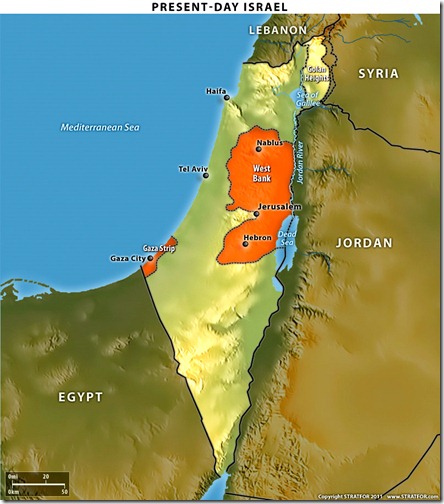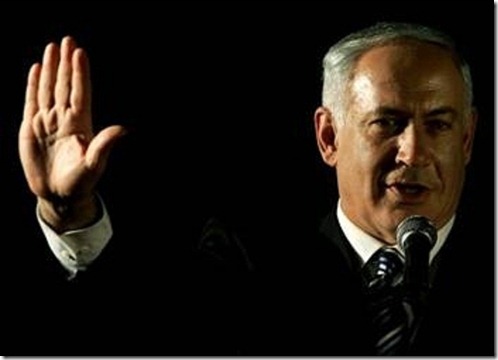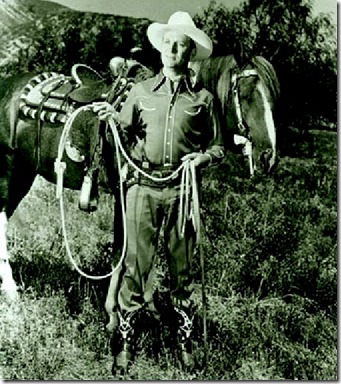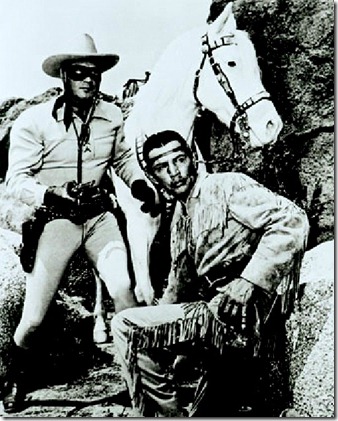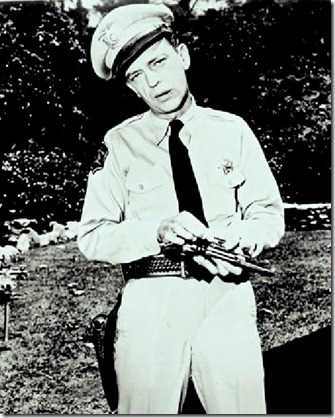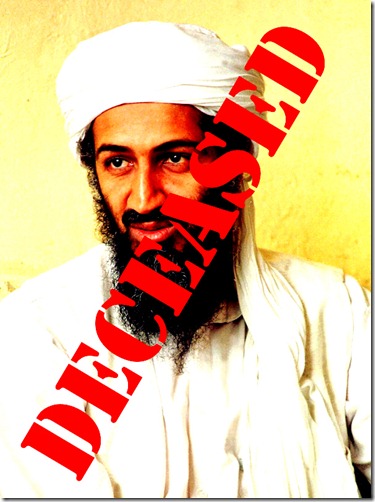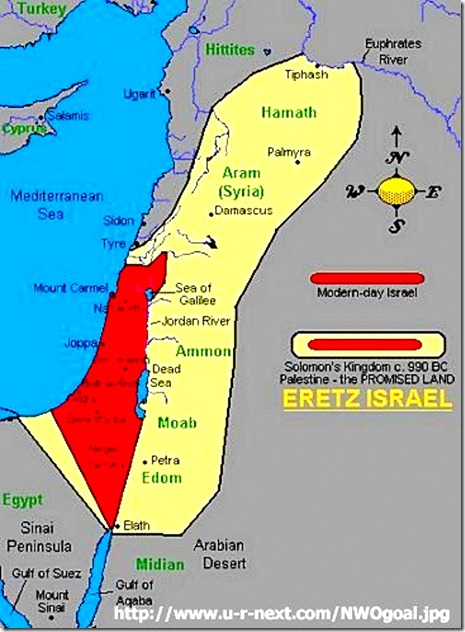
Here is a STRATFOR article from George Friedman about Israel’s borders and National Security. Read this in line with Prime Minister Benjamin Netanyahu’s fatalist remark that the U.N. General Assembly voting to recognize a sovereign Palestinian State is inevitable.
JRH 5/31/11
***************************
Israel's Borders and National Security
By George Friedman
May 31, 2011 0137 GMT
Israeli Prime Minister Benjamin Netanyahu said May 30 that Israel could not prevent the United Nations from recognizing a Palestinian state, in the sense of adopting a resolution on the subject. Two weeks ago, U.S. President Barack Obama, in a speech, called on Israel to return to some variation of its pre-1967 borders. The practical significance of these and other diplomatic evolutions in relation to Israel is questionable. Historically, U.N. declarations have had variable meanings, depending on the willingness of great powers to enforce them. Obama’s speech on Israel, and his subsequent statements, created enough ambiguity to make exactly what he was saying unclear. Nevertheless, it is clear that the diplomatic atmosphere on Israel is shifting.
There are many questions concerning this shift, ranging from the competing moral and historical claims of the Israelis and Palestinians to the internal politics of each side to whether the Palestinians would be satisfied with a return to the pre-1967 borders. All of these must be addressed, but this analysis is confined to a single issue: whether a return to the 1967 borders would increase the danger to Israel’s national security. Later analyses will focus on Palestinian national security issues and those of others.
Early Borders
It is important to begin by understanding that the pre-1967 borders are actually the borders established by the armistice agreements of 1949. The 1948 U.N. resolution creating the state of Israel created a much smaller Israel. The Arab rejection of what was called “partition” resulted in a war that created the borders that placed the West Bank (named after the west bank of the Jordan River) in Jordanian hands, along with substantial parts of Jerusalem, and placed Gaza in the hands of the Egyptians.
Map: Israel’s pre-1967 borders (1949 armistice to 6 Day War 1967
The 1949 borders substantially improved Israel’s position by widening the corridors between the areas granted to Israel under the partition, giving it control of part of Jerusalem and, perhaps most important, control over the Negev. The latter provided Israel with room for maneuver in the event of an Egyptian attack — and Egypt was always Israel’s main adversary. At the same time, the 1949 borders did not eliminate a major strategic threat. The Israel-Jordan border placed Jordanian forces on three sides of Israeli Jerusalem, and threatened the Tel Aviv-Jerusalem corridor. Much of the Israeli heartland, the Tel Aviv-Haifa-Jerusalem triangle, was within Jordanian artillery range, and a Jordanian attack toward the Mediterranean would have to be stopped cold at the border, since there was no room to retreat, regroup and counterattack.
For Israel, the main danger did not come from Jordan attacking by itself. Jordanian forces were limited, and tensions with Egypt and Syria created a de facto alliance between Israel and Jordan. In addition, the Jordanian Hashemite regime lived in deep tension with the Palestinians, since the former were British transplants from the Arabian Peninsula, and the Palestinians saw them as well as the Israelis as interlopers. Thus the danger on the map was mitigated both by politics and by the limited force the Jordanians could bring to bear.
Nevertheless, politics shift, and the 1949 borders posed a strategic problem for Israel. If Egypt, Jordan and Syria were to launch a simultaneous attack (possibly joined by other forces along the Jordan River line) all along Israel’s frontiers, the ability of Israel to defeat the attackers was questionable. The attacks would have to be coordinated — as the 1948 attacks were not — but simultaneous pressure along all frontiers would leave the Israelis with insufficient forces to hold and therefore no framework for a counterattack. From 1948 to 1967, this was Israel’s existential challenge, mitigated by the disharmony among the Arabs and the fact that any attack would be detected in the deployment phase.
Israel’s strategy in this situation had to be the pre-emptive strike. Unable to absorb a coordinated blow, the Israelis had to strike first to disorganize their enemies and to engage them sequentially and in detail. The 1967 war represented Israeli strategy in its first generation. First, it could not allow the enemy to commence hostilities. Whatever the political cost of being labeled the aggressor, Israel had to strike first. Second, it could not be assumed that the political intentions of each neighbor at any one time would determine their behavior. In the event Israel was collapsing, for example, Jordan’s calculations of its own interests would shift, and it would move from being a covert ally to Israel to a nation both repositioning itself in the Arab world and taking advantage of geographical opportunities. Third, the center of gravity of the Arab threat was always Egypt, the neighbor able to field the largest army. Any pre-emptive war would have to begin with Egypt and then move to other neighbors. Fourth, in order to control the sequence and outcome of the war, Israel would have to maintain superior organization and technology at all levels. Finally, and most important, the Israelis would have to move for rapid war termination. They could not afford a war of attrition against forces of superior size. An extended war could drain Israeli combat capability at an astonishing rate. Therefore the pre-emptive strike had to be decisive.
The 1949 borders actually gave Israel a strategic advantage. The Arabs were fighting on external lines. This means their forces could not easily shift between Egypt and Syria, for example, making it difficult to exploit emergent weaknesses along the fronts. The Israelis, on the other hand, fought from interior lines, and in relatively compact terrain. They could carry out a centrifugal offense, beginning with Egypt, shifting to Jordan and finishing with Syria, moving forces from one front to another in a matter of days. Put differently, the Arabs were inherently uncoordinated, unable to support each other. The pre-1967 borders allowed the Israelis to be superbly coordinated, choosing the timing and intensity of combat to suit their capabilities. Israel lacked strategic depth, but it made up for it with compact space and interior lines. If it could choose the time, place and tempo of engagements, it could defeat numerically superior forces. The Arabs could not do this.
Israel needed two things in order to exploit this advantage. The first was outstanding intelligence to detect signs of coordination and the massing of forces. Detecting the former sign was a matter of political intelligence, the latter a matter of tactical military intelligence. But the political intelligence would have to manifest itself in military deployments, and given the geography of the 1949 borders, massing forces secretly was impossible. If enemy forces could mass undetected it would be a disaster for Israel. Thus the center of gravity of Israeli war-making was its intelligence capabilities.
The second essential requirement was an alliance with a great power. Israel’s strategy was based on superior technology and organization — air power, armor and so on. The true weakness of Israel’s strategic power since the country’s creation had been that its national security requirements outstripped its industrial and financial base. It could not domestically develop and produce all of the weapons it needed to fight a war. Israel depended first on the Soviets, then until 1967 on France. It was not until after the 1967 war that the United States provided any significant aid to Israel. However, under the strategy of the pre-1967 borders, continual access to weapons — and in a crisis, rapid access to more weapons — was essential, so Israel had to have a powerful ally. Not having one, coupled with an intelligence failure, would be disastrous.
After 1967
The 1967 war allowed Israel to occupy the Sinai, all of Jerusalem, the West Bank and the Golan Heights. It placed Egyptian forces on the west bank of the Suez, far from Israel, and pushed the Jordanians out of artillery range of the Israeli heartland. It pushed Syria out of artillery range as well. This created the strategic depth Israel required, yet it set the stage for the most serious military crisis in Israeli history, beginning with a failure in its central capability — intelligence.
Map: Israel’s post 1967 borders
The intelligence failure occurred in 1973, when Syria and Egypt managed to partially coordinate an assault on Israel without Israeli intelligence being able to interpret the intelligence it was receiving. Israel was saved above all by rapid rearmament by the United States, particularly in such staples of war as artillery shells. It was also aided by greater strategic depth. The Egyptian attack was stopped far from Israel proper in the western Sinai. The Syrians fought in the Golan Heights rather than in the Galilee.
Here is the heart of the pre-1967 border issue. Strategic depth meant that the Syrians and Egyptians spent their main offensive force outside of Israel proper. This bought Israel space and time. It allowed Israel to move back to its main sequential strategy. After halting the two attacks, the Israelis proceeded to defeat the Syrians in the Golan then the Egyptians in the Sinai. However, the ability to mount the two attacks — and particularly the Sinai attack — required massive American resupply of everything from aircraft to munitions. It is not clear that without this resupply the Israelis could have mounted the offensive in the Sinai, or avoided an extended war of attrition on unfavorable terms. Of course, the intelligence failure opened the door to Israel’s other vulnerability — its dependency on foreign powers for resupply. Indeed, perhaps Israel’s greatest miscalculation was the amount of artillery shells it would need to fight the war; the amount required vastly outstripped expectations. Such a seemingly minor thing created a massive dependency on the United States, allowing the United States to shape the conclusion of the war to its own ends so that Israel’s military victory ultimately evolved into a political retreat in the Sinai.
It is impossible to argue that Israel, fighting on its 1949 borders, was less successful than when it fought on its post-1967 borders. What happened was that in expanding the scope of the battlefield, opportunities for intelligence failures multiplied, the rate of consumption of supplies increased and dependence grew on foreign powers with different political interests. The war Israel fought from the 1949 borders was more efficiently waged than the one it fought from the post-1967 borders. The 1973 war allowed for a larger battlefield and greater room for error (errors always occur on the battlefield), but because of intelligence surprises and supply miscalculations it also linked Israel’s national survival to the willingness of a foreign government to quickly resupply its military.
The example of 1973 casts some doubt around the argument that the 1948 borders were excessively vulnerable. There are arguments on both sides of the issue, but it is not a clear-cut position. However, we need to consider Israel’s borders not only in terms of conventional war but also in terms of unconventional war — both uprisings and the use of chemical, biological, radiological or nuclear (CBRN) weapons.
There are those who argue that there will be no more peer-to-peer conflicts. We doubt that intensely. However, there is certainly a great deal of asymmetric warfare in the world, and for Israel it comes in the form of intifadas, rocket attacks and guerrilla combat against Hezbollah in Lebanon. The post-1967 borders do not do much about these forms of warfare. Indeed, it can be argued that some of this conflict happens because of the post-1967 borders.
A shift to the 1949 borders would not increase the risk of an intifada but would make it moot. It would not eliminate conflict with Hezbollah. A shift to the 1949 line would eliminate some threats but not others. From the standpoint of asymmetric warfare, a shift in borders could increase the threat from Palestinian rockets to the Israeli heartland. If a Palestinian state were created, there would be the very real possibility of Palestinian rocket fire unless there was a significant shift in Hamas’ view of Israel or Fatah increased its power in the West Bank and was in a position to defeat Hamas and other rejectionist movements. This would be the heart of the Palestinian threat if there were a return to the borders established after the initial war.
The shape of Israel’s borders doesn’t really have an effect on the threat posed by CBRN weapons. While some chemical artillery rockets could be fired from closer borders, the geography leaves Israel inherently vulnerable to this threat, regardless of where the precise boundary is drawn, and they can already be fired from Lebanon or Gaza. The main threat discussed, a CBRN warhead fitted to an Iranian medium-range ballistic missile launched from a thousand miles away, has little to do with precisely where a line in the Levant is drawn.
When we look at conventional warfare, I would argue that the main issue Israel has is not its borders but its dependence on outside powers for its national security. Any country that creates a national security policy based on the willingness of another country to come to its assistance has a fundamental flaw that will, at some point, be mortal. The precise borders should be those that a) can be defended and b) do not create barriers to aid when that aid is most needed. In 1973, U.S. President Richard Nixon withheld resupply for some days, pressing Israel to the edge. U.S. interests were not those of Israel’s. This is the mortal danger to Israel — a national security requirement that outstrips its ability to underwrite it.
Israel’s borders will not protect it against Iranian missiles, and rockets from Gaza are painful but do not threaten Israel’s existence. In case the artillery rocket threat expands beyond this point, Israel must retain the ability to reoccupy and re-engage, but given the threat of asymmetric war, perpetual occupation would seem to place Israel at a perpetual disadvantage. Clearly, the rocket threat from Hamas represents the best argument for strategic depth.
Map: Present Day Israel
The best argument for returning to the pre-1967 borders is that Israel was more capable of fighting well on these borders. The war of independence, the 1956 war and the 1967 war all went far better than any of the wars that came after. Most important, if Israel is incapable of generating a national defense industry that can provide all the necessary munitions and equipment without having to depend on its allies, then it has no choice but to consider what its allies want. With the pre-1967 borders there is a greater chance of maintaining critical alliances. More to the point, the pre-1967 borders require a smaller industrial base because they do not require troops for occupation and they improve Israel’s ability to conduct conventional operations in a time of crisis.
There is a strong case to be made for not returning to the 1949 lines, but it is difficult to make that case from a military point of view. Strategic depth is merely one element of a rational strategy. Given that Israel’s military security depends on its relations with third parties, the shape of its borders and diplomatic reality are, as always, at the heart of Israeli military strategy.
In warfare, the greatest enemy of victory is wishful thinking. The assumption that Israel will always have an outside power prepared to rush munitions to the battlefield or help create costly defense systems like Iron Dome is simply wishful thinking. There is no reason to believe this will always be the case. Therefore, since this is the heart of Israeli strategy, the strategy rests on wishful thinking. The question of borders must be viewed in the context of synchronizing Israeli national security policy with Israeli national means.
There is an argument prevalent among Israelis and their supporters that the Arabs will never make a lasting peace with Israel. From this flows the assumption that the safest course is to continue to hold all territory. My argument assumes the worst case, which is not only that the Palestinians will not agree to a genuine peace but also that the United States cannot be counted on indefinitely. All military planning must begin with the worst case.
However, I draw a different conclusion from these facts than the Israelis do. If the worst-case scenario is the basis for planning, then Israel must reduce its risk and restructure its geography along the more favorable lines that existed between 1949 and 1967, when Israel was unambiguously victorious in its wars, rather than the borders and policies after 1967, when Israel has been less successful. The idea that the largest possible territory provides the greatest possible security is not supportable in military history. As Frederick the Great once said, he who defends everything defends nothing.
____________________________________
Reprinting or republication of this report on websites is authorized by prominently displaying the following sentence, including the hyperlink to STRATFOR, at the beginning or end of the report."Israel's Borders and National Security is republished with permission of STRATFOR."
Copyright 2010 (- 2011)
